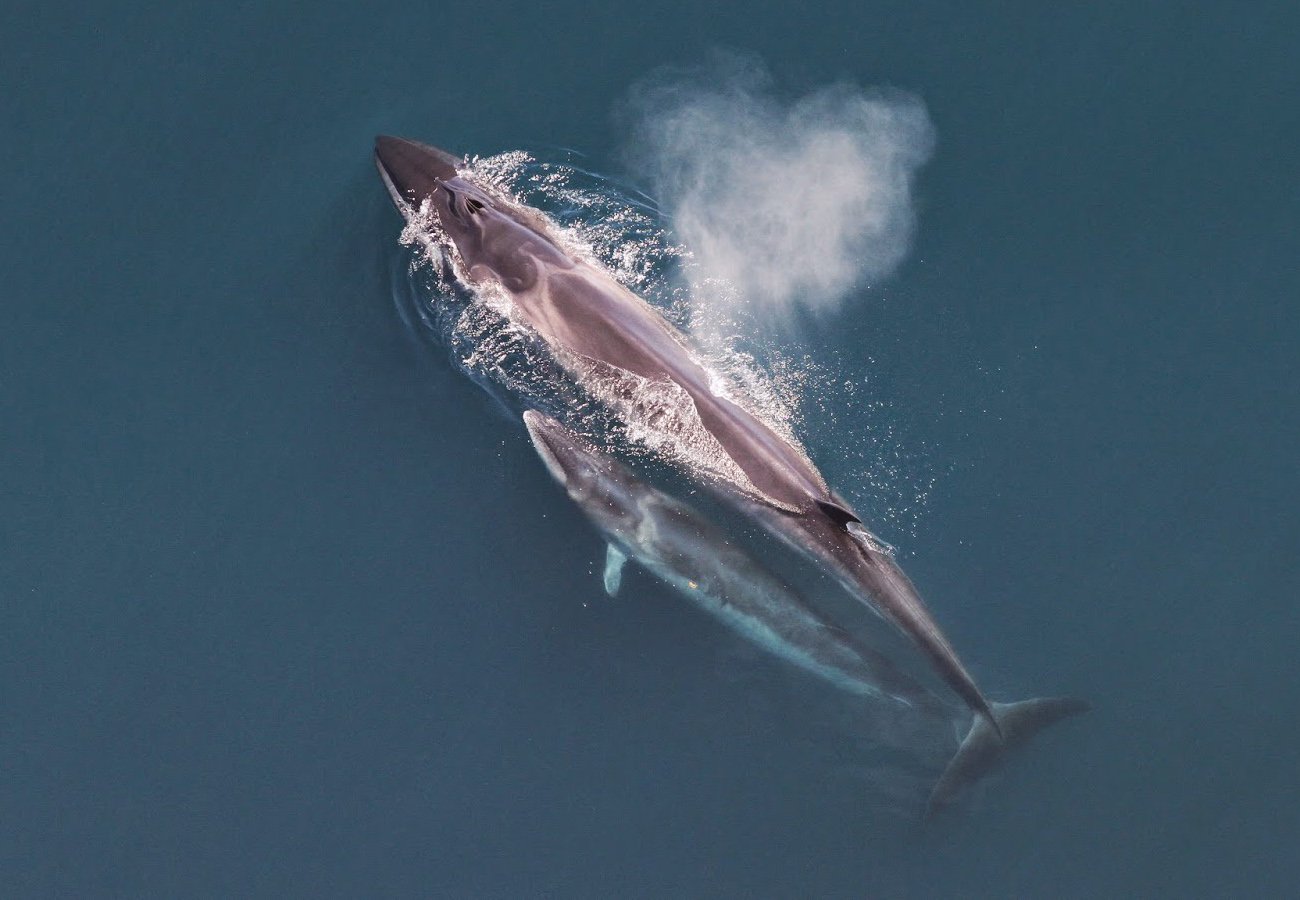The harbour porpoise (Phocoena phocoena) is the smallest cetacean found in Canada. Members of the toothed whale family (Odontoceti), these cetaceans (whales, dolphins and porpoises) are close relatives of the Dall’s porpoise, sometimes mating and producing hybrids; however, harbour porpoises are shyer and less commonly seen despite living in coastal areas. They rarely approach vessels to play in their bow waves like other porpoises. A nickname for these animals is “puffing pigs” due to the loud exhale that can be heard when they surface for air.
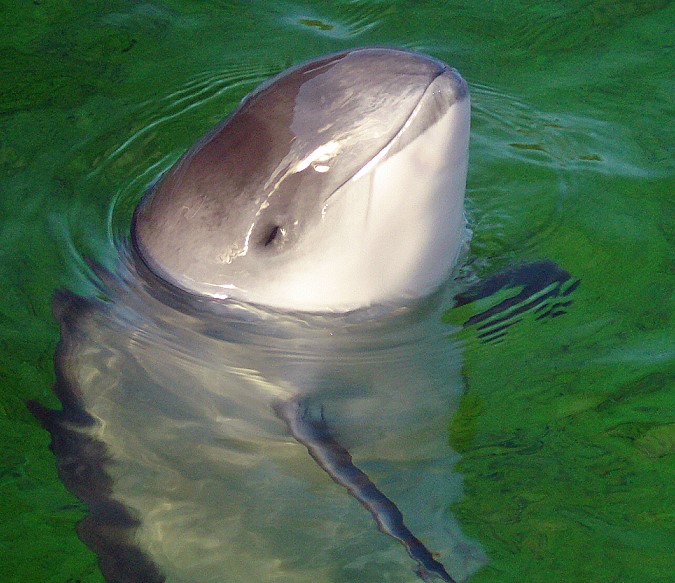
Description
As the smallest cetacean, harbour porpoises have small, rounded beakless heads with dark lips and chin. These porpoises have robust bodies with dark grayish brown colouring on their back and sides that blend into their pale grey or white undersides. Single or multiple dark stripes connect the porpoise’s mouth to its pectoral flipper. Their small triangular fin is located behind the centre of the porpoise’s back and aids in distinguishing them from other small cetaceans. Their body ends in a small, curved tail fluke with a single notch located in the middle. Females are typically larger than males at 1.9 m in length and around 76 kg in weight, whereas the males are closer to 1.8 m and 61 kg.
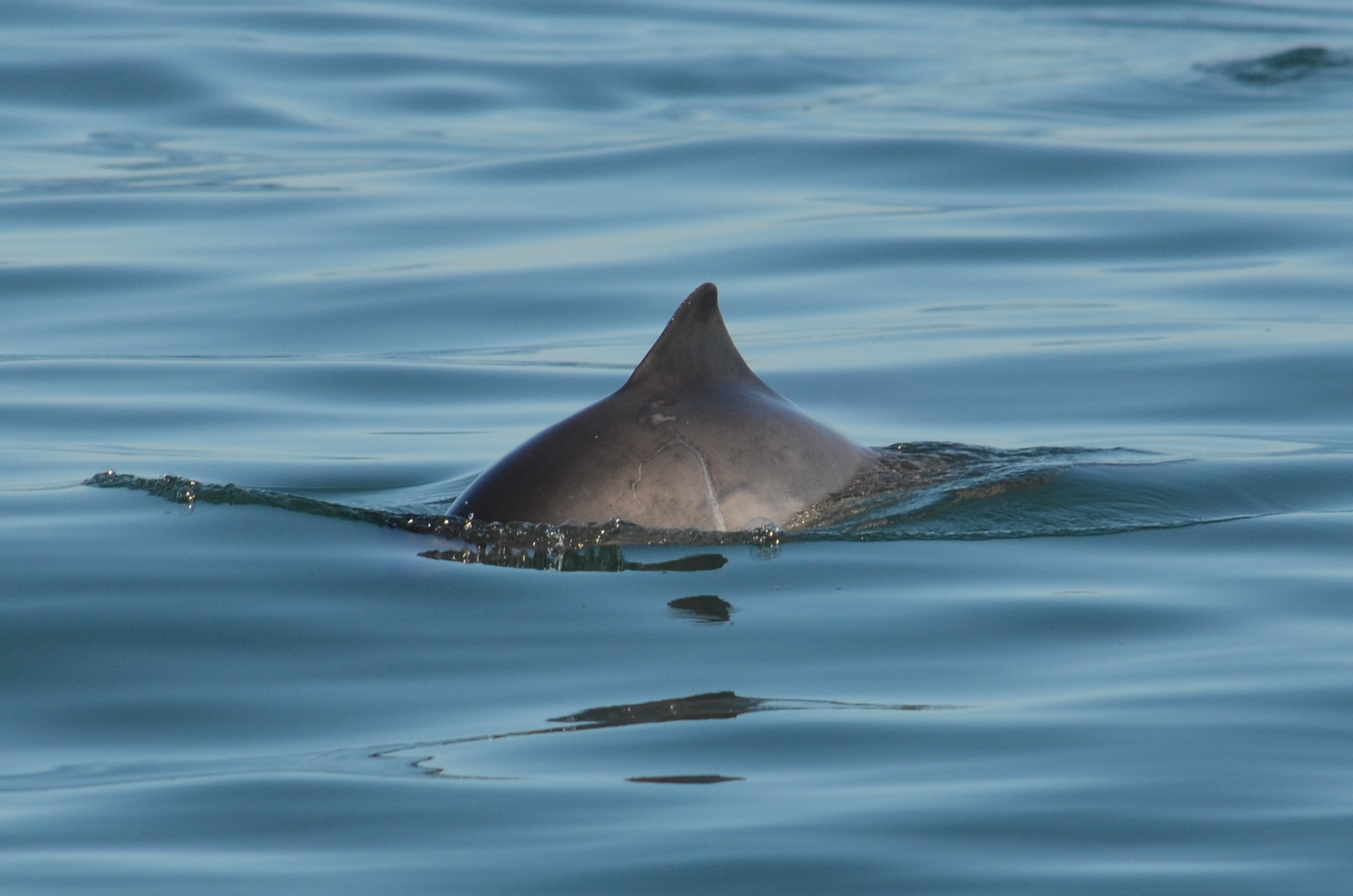
Distribution
Harbour porpoises are found in the coastal waters of the subarctic regions of the North Atlantic and the North Pacific. These animals frequently visit shallow bays, harbours, estuaries and tidal channels shallower than 200 m and are rarely found in the open ocean. Unlike many other marine mammals, the harbour porpoise has been found to swim up rivers, up to 10 km inland, and, very rarely, much further. The seasonal migration undertaken by the harbour porpoise is mostly an inshore-offshore movement, influenced by the availability of prey or the presence of ice-free waters.
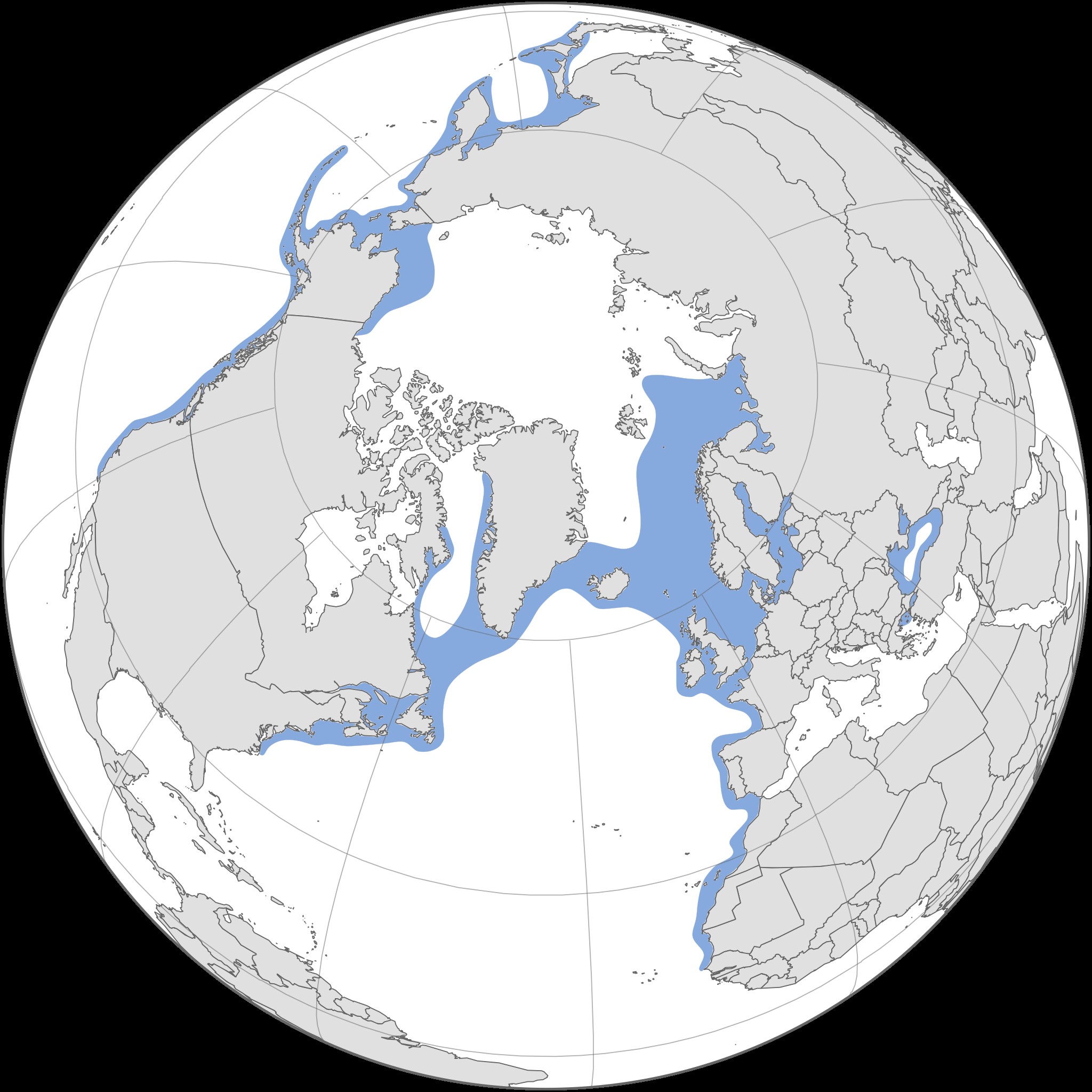
Reproduction and Development
Unlike other cetaceans, harbour porpoises mature early, at 3–4 years of age and have a shorter lifespan. They also reproduce more frequently than other cetaceans, giving birth to one calf every year or every other year. The mating season generally occurs between June and September, and births happen from May to August. However, little is known about their reproductive biology. After 10–11 months of gestation, mothers give birth to a single calf who will depend on her for sustenance until about 9 months of age. After being weaned, a calf may remain with its mother for up to another 9 months before leaving her and remaining solitary until reaching maturity in a few years. Harbour porpoises may live 8–12 years, yet some have lived to 20–24 years.
Behaviour
Harbour porpoises are shy animals, especially compared to other porpoises. They rarely approach vessels and engage in very limited surface action. When they do surface for air, rather than splashing, harbour porpoises gently roll and arch their backs. These cetaceans are mostly solitary but can sometimes be found in small groups of 2–3, often consisting of a mother and her offspring. However, there have been recorded observations of up to 200 harbour porpoises when seasonal tides result in concentrated prey aggregations. Harbour porpoises emit a very broad range of clicking sounds, ranging from about 110 kHz to 140 kHz. They use this to communicate with each other as well as echolocate their prey in low-visibility conditions, such as when they hunt at night.
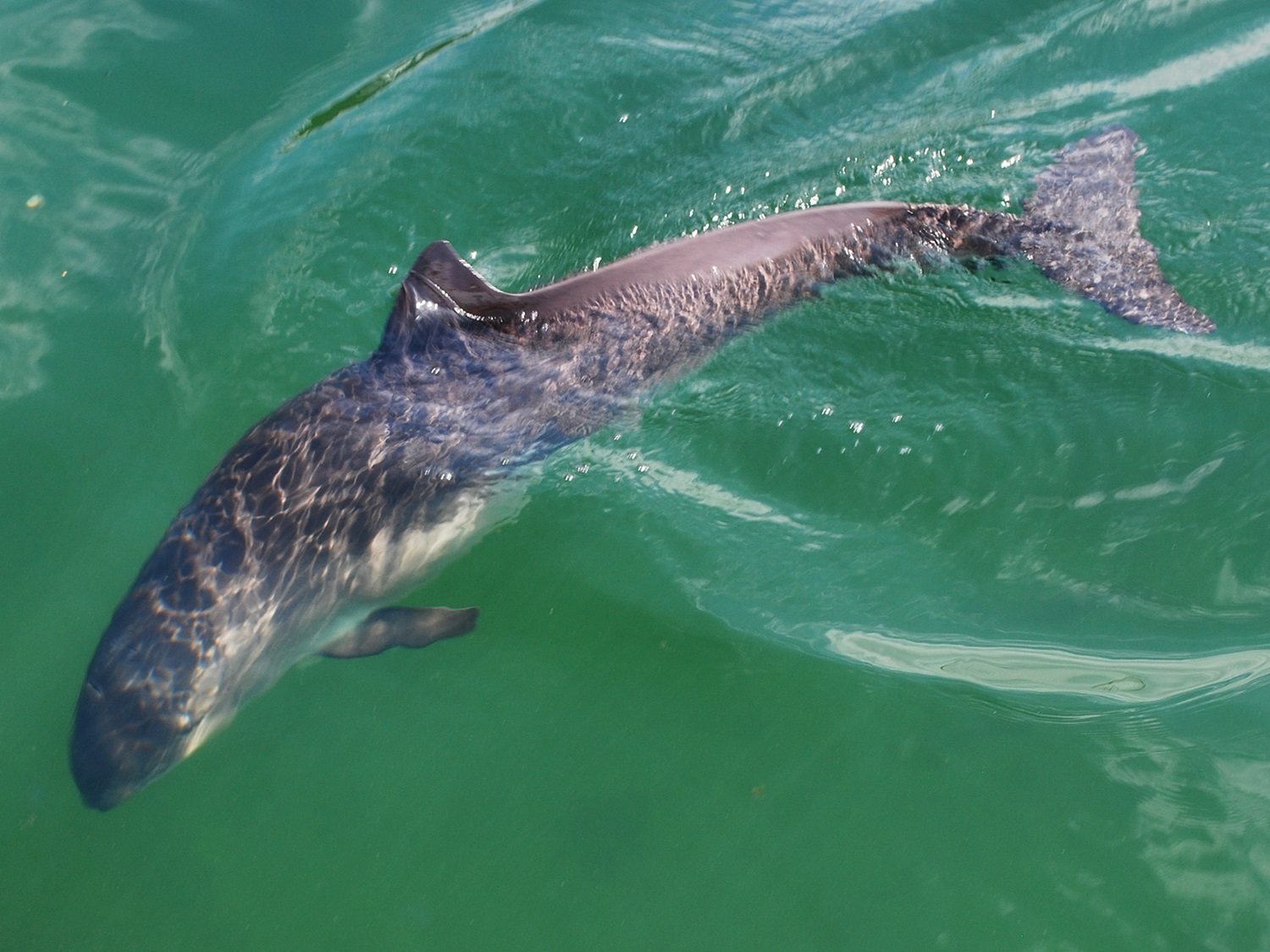
Diet
These small cetaceans eat a variety of small schooling fish such as herring, sprat and sand eels. Squid and octopus are favourites as well. Like other members of the toothed whale family (Odontoceti), harbour porpoises swallow their prey whole. Weaned calves will supplement their diets with krill until they reach adulthood. Harbour porpoises have a high metabolic rate despite living in cooler waters, which typically encourages slower life. To maintain this, the porpoises feed nearly continuously, both during the day and at night. They must consume around 10% of their body mass daily to conserve the necessary energy stores to support the increased metabolism.
Threats and Conservation
As animals that prefer coastal habitats over the open ocean, harbour porpoises remain in close proximity to humans and are vulnerable to human activities. These porpoises risk being captured in gillnets, ingesting pollutants, losing their habitat or being affected by other human disturbances, including noise pollution that disrupts their ability to communicate. According to the International Union for the Conservation of Nature’s (IUCN) Red List of Threatened Species, harbour porpoise populations are of Least Concern; however, they are classified as a species of Special Concern by the Committee on the Status of Endangered Wildlife in Canada (COSEWIC) and may become threatened in both oceans. The natural predators of the harbour porpoise include orcas and larger shark species.

 Share on Facebook
Share on Facebook Share on X
Share on X Share by Email
Share by Email Share on Google Classroom
Share on Google Classroom


